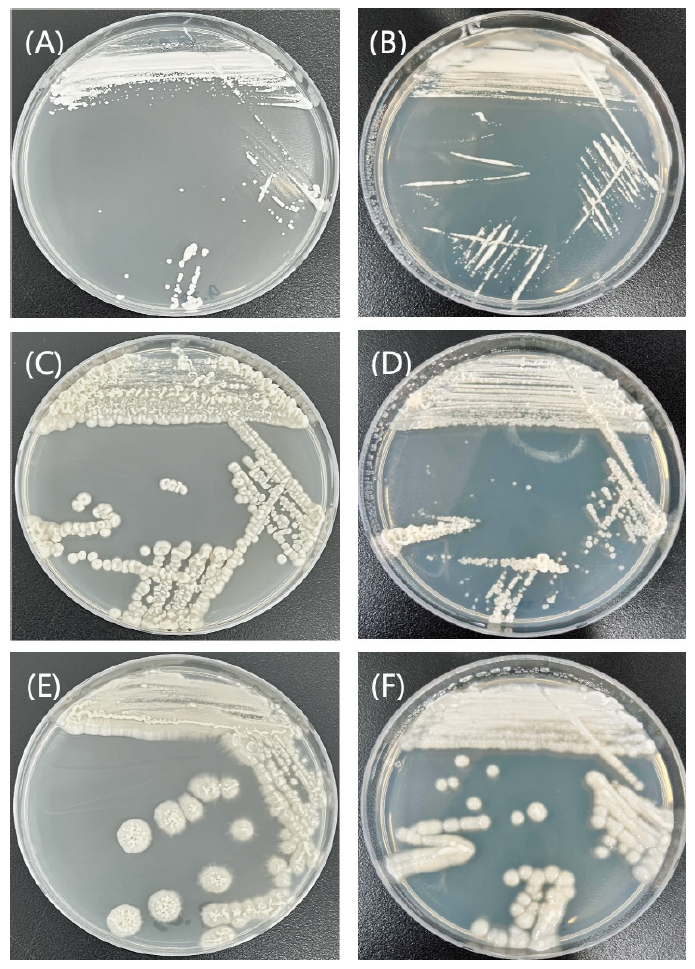Abstract
In 2021, seven yeast strains were isolated from earthworm (
Figures & Tables

Fig. 1. Morphology of cells from the unrecorded strains incubated at 10℃. The colonies of (A) E2, (C) E8, and (E) E9 cultured in yeast mold agar (YM). The colonies of (B) E2, (D) E8, and (F) E9 cultured in potato dextrose agar (PDA).


